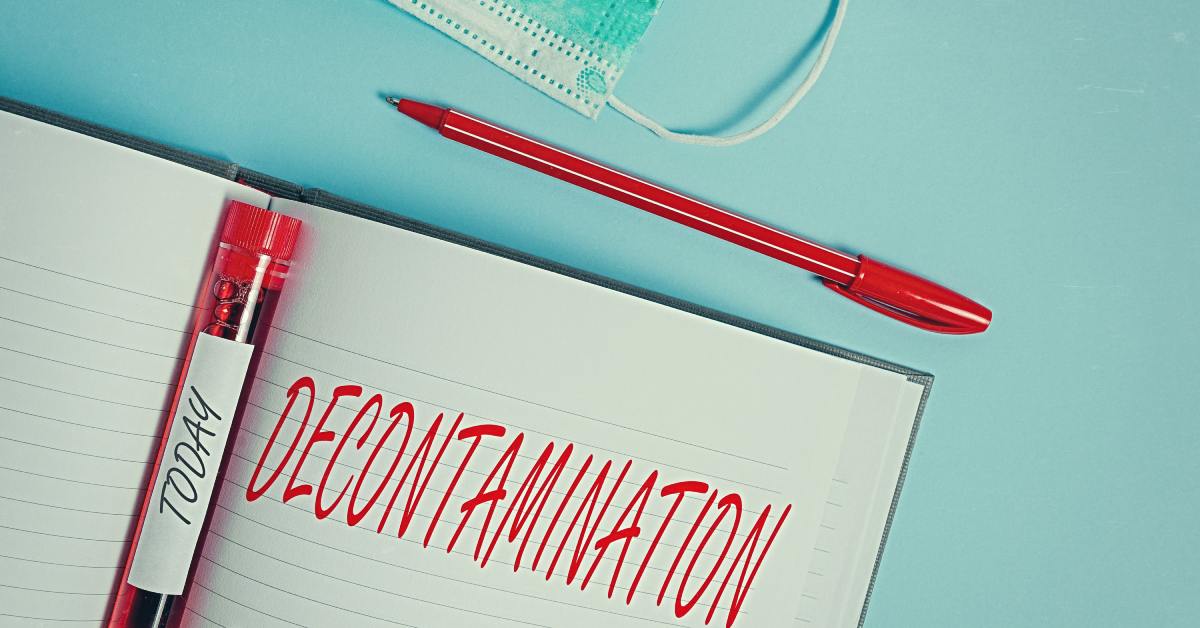
A blood spill presents significant health risks due to potential exposure to blood-borne pathogens like HIV, Hepatitis B, and Hepatitis C. Proper and immediate decontamination is essential to prevent the spread of infectious diseases and ensure a safe environment.
Following a structured procedure minimizes exposure and effectively neutralizes hazards. This guide from Affinity Bio Solutions outlines the critical steps for safely cleaning and decontaminating a blood spill, ensuring the area is restored to a safe condition for everyone.
Immediate Actions: Protection and Isolation
First, ensure your own safety by putting on personal protective equipment (PPE) before approaching the spill. This includes disposable gloves, eye protection, and a mask to prevent contact with hazardous materials.
After protecting yourself, secure the area to prevent others from accidentally entering. Use signs or barriers to isolate the spill and keep foot traffic away until the cleanup is complete.
Required Materials and Equipment
To effectively decontaminate a blood spill, you will need several key items. Gather an EPA-approved disinfectant rated for blood-borne pathogens, disposable cloths or paper towels, a biohazard bag for waste, and additional pairs of gloves. Having all materials ready before you begin the cleanup process ensures you can work efficiently without interruption, reducing the risk of cross-contamination.
Step-by-Step Decontamination Process
Start by carefully containing the spill. Place absorbent materials like paper towels over the affected area to soak up the blood, working from the outside of the spill inward to avoid spreading it further.
Once you’ve absorbed the bulk of the spill, apply the EPA-approved disinfectant according to the manufacturer’s instructions. Ensure the solution remains on the surface for the recommended contact time to effectively kill all pathogens.
Proper Disposal of Contaminated Materials
All materials used during the cleanup, including gloves, towels, and other disposable items, are considered biohazardous waste. Place these items directly into a designated, leak-proof biohazard bag.
Seal the bag securely and dispose of it in accordance with local, state, and federal regulations for biohazardous waste. Never dispose of contaminated materials in regular trash receptacles.
Final Disinfection and Verification
After the initial cleaning, disinfect the area again to ensure complete decontamination. This second application helps eliminate any remaining microscopic pathogens.
Allow the area to air dry completely. Once dry, you can visually inspect the surface to confirm that you’ve removed all traces of the spill and the area is safe.
Why Hire a Professional Blood Cleanup Service
While these steps can manage minor spills, significant blood spills require professional intervention. Certified blood clean up services from Affinity Bio Solutions have specialized training, equipment, and disinfectants to handle large or complex scenes safely. Hiring experts ensures thorough decontamination and complies with all health regulations, protecting you from liability and ensuring the safety of all occupants.
Your Next Steps for a Safe Environment
Properly managing and decontaminating a blood spill is critical for maintaining a safe and healthy space. By following these established procedures, you can effectively mitigate the risks associated with bloodborne pathogens. For significant incidents, rely on Affinity Bio Solutions remediation company to ensure the job is done right.
